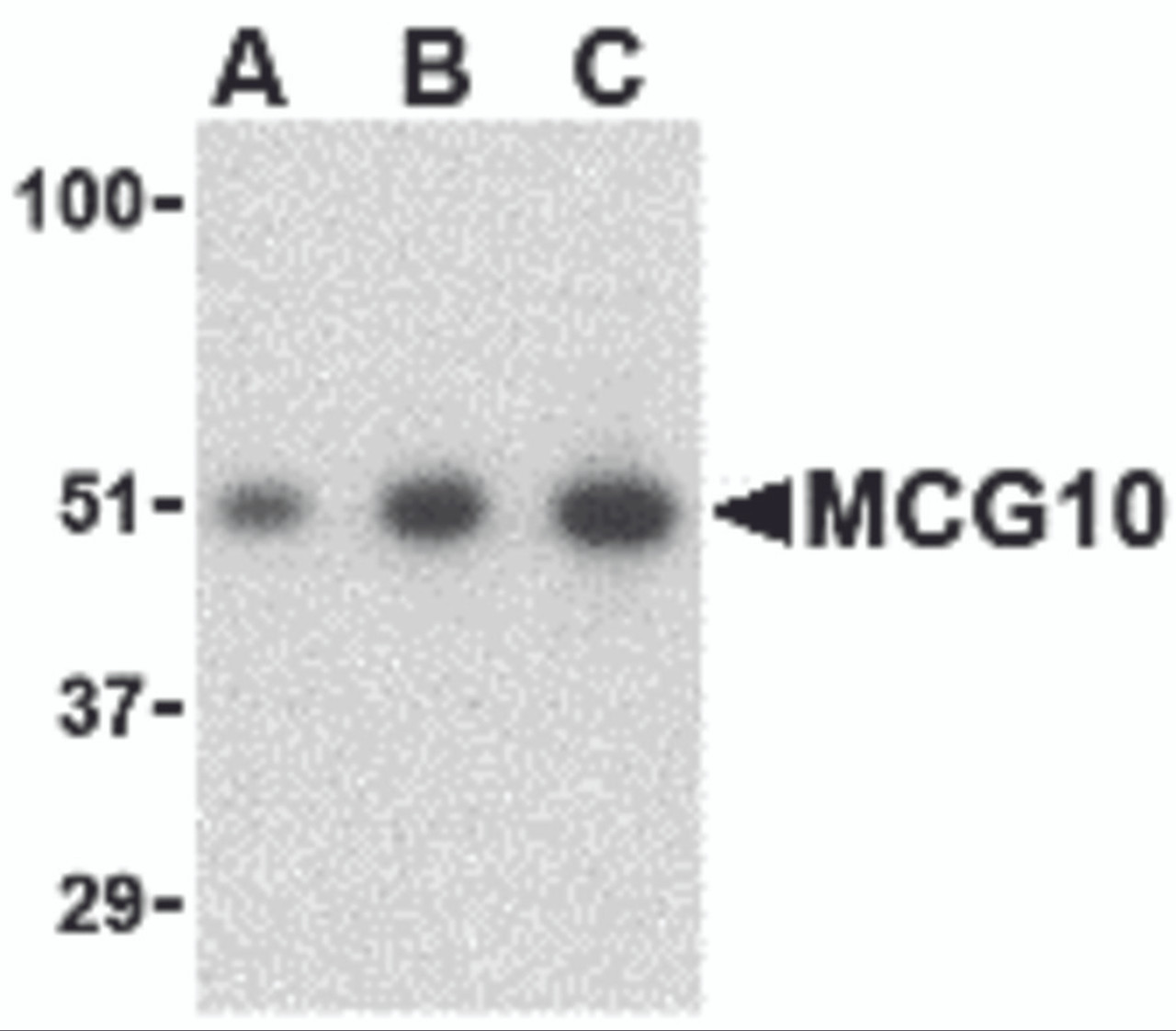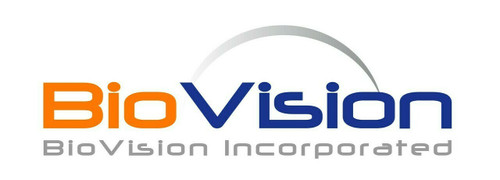Product Description
MCG10 Antibody | 2479 | ProSci
Host: Rabbit
Reactivity: Human
Homology: Predicted species reactivity based on immunogen sequence: Mouse: (100%) , Bovine: (100%)
Immunogen: MCG10 antibody was raised against a 17 amino acid synthetic peptide from near the carboxy terminus of human MCG10.
The immunogen is located within the last 50 amino acids of MCG10.
Research Area: Apoptosis
Tested Application: E, WB, ICC, IF
Application: MCG10 antibody can be used for detection of MCG10 by Western blot at 0.5 - 2 μg/mL. Antibody can also be used for immunocytochemistry starting at 1 μg/mL. For immunofluorescence start at 20 μg/mL.
Antibody validated: Western Blot in human samples; Immunocytochemistry in human samples and Immunofluorescence in human samples. All other applications and species not yet tested.
Specificiy: N/A
Positive Control 1: Cat. No. 1201 - HeLa Cell Lysate
Positive Control 2: Cat. No. 17-001 - HeLa Cell Slide
Positive Control 3: N/A
Positive Control 4: N/A
Positive Control 5: N/A
Positive Control 6: N/A
Molecular Weight: N/A
Validation: N/A
Isoform: N/A
Purification: MCG10 Antibody is affinity chromatography purified via peptide column.
Clonality: Polyclonal
Clone: N/A
Isotype: IgG
Conjugate: Unconjugated
Physical State: Liquid
Buffer: MCG10 Antibody is supplied in PBS containing 0.02% sodium azide.
Concentration: 1 mg/ml
Storage Condition: MCG10 antibody can be stored at 4˚C for three months and -20˚C, stable for up to one year. As with all antibodies care should be taken to avoid repeated freeze thaw cycles. Antibodies should not be exposed to prolonged high temperatures.
Alternate Name: MCG10 Antibody: CBP, LIP4, MCG10Alpha-CP4
User Note: Optimal dilutions for each application to be determined by the researcher.
BACKGROUND: MCG10 Antibody: MCG10 is a member of the KH-domain RNA-binding protein family. Proteins of this family also referred to as alpha-CPs, bind to RNA with specificity for C-rich pyrimidine regions. Alpha-CPs play important roles in post-transcriptional activities and have different cellular distributions. MCG10 is induced by p53 and DNA damage via two p53-responsive promoter elements. Its overexpression in transfected cells results in the suppression of cell proliferation by inducing apoptosis and cell cycle arrest in G2-M. Decreased expression of one isoform of MCG10 has been observed in many forms of lung cancer, leading to speculation that MCG10 can act as a tumor suppressor. Multiple alternatively spliced isoforms of MCG10 have been identified.
 Euro
Euro
 USD
USD
 British Pound
British Pound
 NULL
NULL












